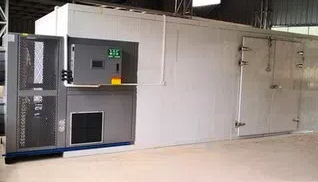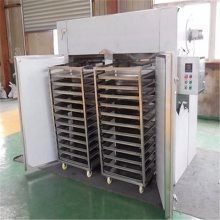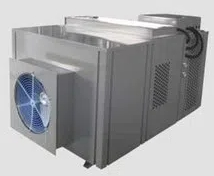
Content Menu
How To Install Bosch Heat Pump Dryer: A Comprehensive Guide
● Introduction
● Understanding the Bosch Heat Pump Dryer
● Tools and Materials Needed
>> Step 1: Choose the Right Location
>> Step 2: Prepare the Area
>> Step 3: Unbox the Dryer
>> Step 4: Install the Drain Hose (if applicable)
>> Step 5: Connect the Power Supply
>> Step 6: Level the Dryer
>> Step 7: Test the Dryer
>> Step 8: Final Adjustments
>> Step 9: Read the Manual
>> Step 10: Enjoy Your Dryer
● Conclusion
● Frequently Asked Questions
>> 1. Can I install a Bosch Heat Pump Dryer myself?
>> 2. How long does it take to install a Bosch Heat Pump Dryer?
>> 3. Do I need a special outlet for my Bosch Heat Pump Dryer?
>> 4. Can I use a drain hose with my Bosch Heat Pump Dryer?
>> 5. What should I do if my dryer is not drying clothes properly?
Introduction
Installing a Bosch Heat Pump Dryer can seem daunting, but with the right guidance, it can be a straightforward process. This article will provide a detailed step-by-step guide on how to install your Bosch Heat Pump Dryer, ensuring you can enjoy its energy-efficient drying capabilities in no time.

Understanding the Bosch Heat Pump Dryer
Bosch Heat Pump Dryers are designed to be energy-efficient and versatile. They use a heat pump system to dry clothes without the need for external venting, making them ideal for apartments and homes without traditional dryer vents. Before starting the installation, familiarize yourself with the components of your dryer and the installation requirements.

Tools and Materials Needed
Before you begin, gather the following tools and materials:
1. Screwdriver
2. Level
3. Measuring tape
4. Drain hose (if applicable)
5. Installation manual
Step 1: Choose the Right Location
Select a suitable location for your dryer. It should be near a power outlet and, if using a drain hose, close to a drain. Ensure there is enough space for the dryer to operate efficiently, with at least a few inches of clearance on all sides.
Step 2: Prepare the Area
Clear the area of any obstructions. Ensure the floor is level and solid. If the floor is uneven, adjust the dryer feet to ensure stability.
Step 3: Unbox the Dryer
Carefully unbox your Bosch Heat Pump Dryer. Remove all packaging materials and check for any damage. Ensure all components are included as per the installation manual.
Step 4: Install the Drain Hose (if applicable)
If your model requires a drain hose, follow these steps:
1. Locate the drain outlet on the back of the dryer.
2. Attach the drain hose securely to the outlet.
3. Route the hose to your drain, ensuring there are no kinks or bends that could impede water flow.
Step 5: Connect the Power Supply
Plug the dryer into a grounded electrical outlet. Ensure the voltage matches the specifications in the installation manual. Avoid using extension cords, as they can pose a fire hazard.
Step 6: Level the Dryer
Use a level to check that the dryer is perfectly horizontal. Adjust the feet as necessary to achieve a level position. This step is crucial for optimal performance and to prevent excessive noise during operation.
Step 7: Test the Dryer
Before using the dryer for the first time, run a test cycle. This will help you ensure that everything is functioning correctly. Check for any unusual noises or leaks.
Step 8: Final Adjustments
After the test cycle, make any necessary adjustments. Ensure the dryer door opens and closes smoothly and that the controls are functioning properly.
Step 9: Read the Manual
Familiarize yourself with the user manual. Understanding the various settings and features of your Bosch Heat Pump Dryer will help you maximize its efficiency and lifespan.
Step 10: Enjoy Your Dryer
Once everything is set up and functioning correctly, you can start using your Bosch Heat Pump Dryer. Enjoy the convenience of energy-efficient drying!
Conclusion
Installing a Bosch Heat Pump Dryer is a manageable task with the right preparation and guidance. By following these steps, you can ensure a successful installation and enjoy the benefits of your new appliance.

Frequently Asked Questions
1. Can I install a Bosch Heat Pump Dryer myself?
Yes, most homeowners can install a Bosch Heat Pump Dryer with basic tools and following the provided instructions.
2. How long does it take to install a Bosch Heat Pump Dryer?
Typically, the installation process takes about 1-2 hours, depending on your experience and the complexity of the setup.
3. Do I need a special outlet for my Bosch Heat Pump Dryer?
Ensure that the outlet matches the voltage requirements specified in the installation manual. A standard 120V outlet is usually sufficient.
4. Can I use a drain hose with my Bosch Heat Pump Dryer?
Yes, if your model supports it, using a drain hose can simplify the drying process by automatically draining condensation.
5. What should I do if my dryer is not drying clothes properly?
Check for any blockages in the drain hose, ensure the dryer is level, and refer to the user manual for troubleshooting tips.












